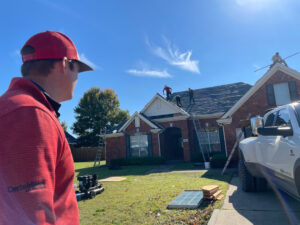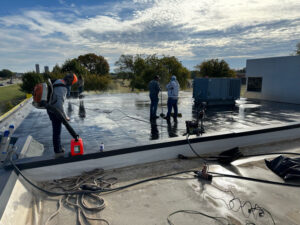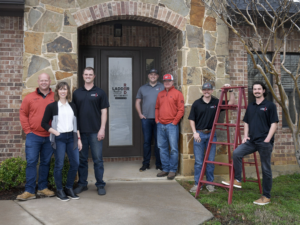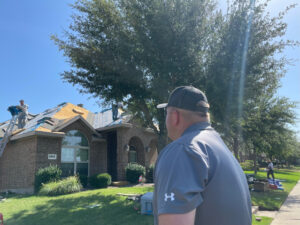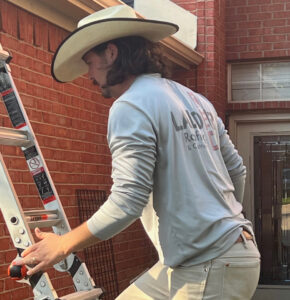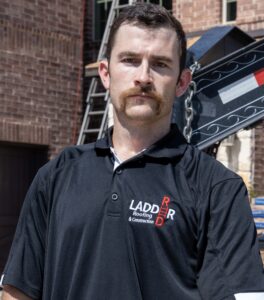Understand minimum roof pitch for shingles and you will be a millionaire; we guarantee it.
We’re kidding, but if you’re reading this, you might have the good fortune of living in the DFW Metroplex. And that good fortune brings with it teams of fraudsters who assemble for every major storm.
There are so many roofing scams running operating out there, and it’s impossible to know them all.
But one thing is for sure, they will cut every corner possible to make a couple more bucks.
“Well, it’s easy to spot when roofers are defrauding you. Right?”
Wrong.
Bad actors know that homeowners usually don’t care much about their roof, and they take advantage of them with this knowledge.
And we don’t blame you either. Can you know every last detail about dentistry when you’re getting your teeth cleaned?
No, you count on an expert to know what they’re doing and perform diligent work.
Minimum roof pitch for shingles is one of those niche, boring topics that no one cares about (including a lot of roofers, unfortunately).
But, it’s our mission to help consumers like yourselves protect themselves from crooks. If you’re educated, you’re protected.
So, grab a cup of coffee and let’s enter: The Thrilling World of Minimum Roof Pitch for Shingles
Table of Contents
What the Heck is Minimum Roof Pitch for Shingles?
We’re so glad you asked.
The shingles on your roof need something called slope in order for them to function well.
It’s safe to assume that you know what slope is but for our purposes, it means any angle of a roof other than zero.
Why do shingles need this magical angle?
Shingles take stuff that hits your roof (water primarily) and get it off the roof. It accomplishes this by lying at an angle that gravity can use to pull things off your roof.
Shingle roofs are the most susceptible to failing this minimum need. This is because shingle roofs don’t take an expert to install (especially when done wrong), so the majority of roofers stick to shingle roofing.
“But tell us, what is the most common type of roof pitch!?”
Calm down, we’re getting there.
What is the Most Common Roof Pitch/Angle?
Wow! We’re so glad you asked and are so invested in the angles of your roof.
Well, eager student, the most common roof pitch is 4/12, or 18.5 degrees.
While this angle happened to win Ms. Congeniality amongst all other angles, there are many other slopes and they want attention too.
Let’s categorize and summarize, like true professionals do:
Flat Roof Pitch
This is the minimum roof pitch angle. But are you ready for the kicker? It’s not actually flat.
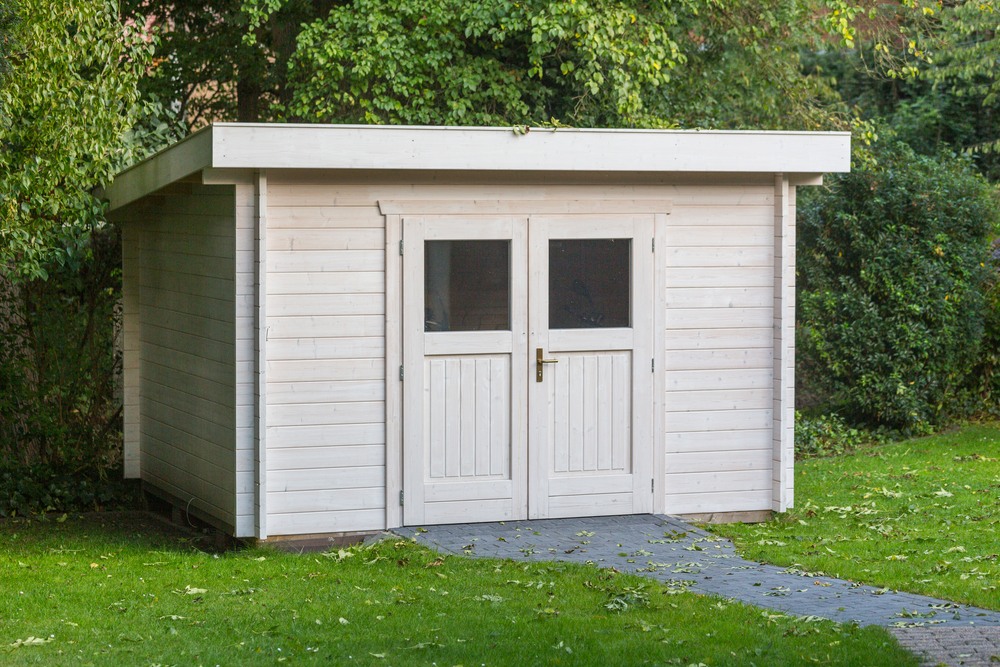
Before you offer an explosive expose to your local newspaper, listen up.
If it were truly flat, nothing would drain off of it. This would be bad.
You’re used to seeing these on backyard sheds and some older apartment complexes.
Next up:
The Low-Slope Roof Pitch
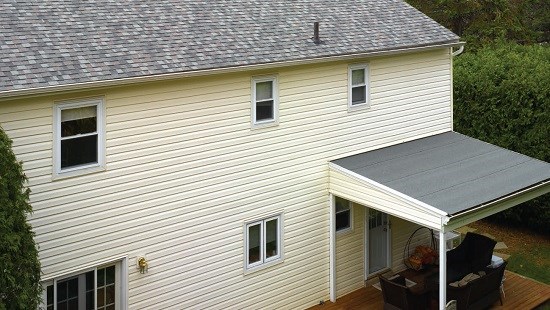
You can see these in older homes with patio-like additions, or with backyard sheds.
Next up:
The Normal Slope Pitch
These bad boys are what you see in most residential neighborhoods. The angles used are from 2:12 to 4:12.
Liquids run off the roof easier, and it’s pretty easy to walk on.

The High Slope Pitch
The stuff of roofer’s nightmares. Pitched from 5/12 to 12/12, these are often found in upscale neighborhoods on giant houses that have many, many faces on them.
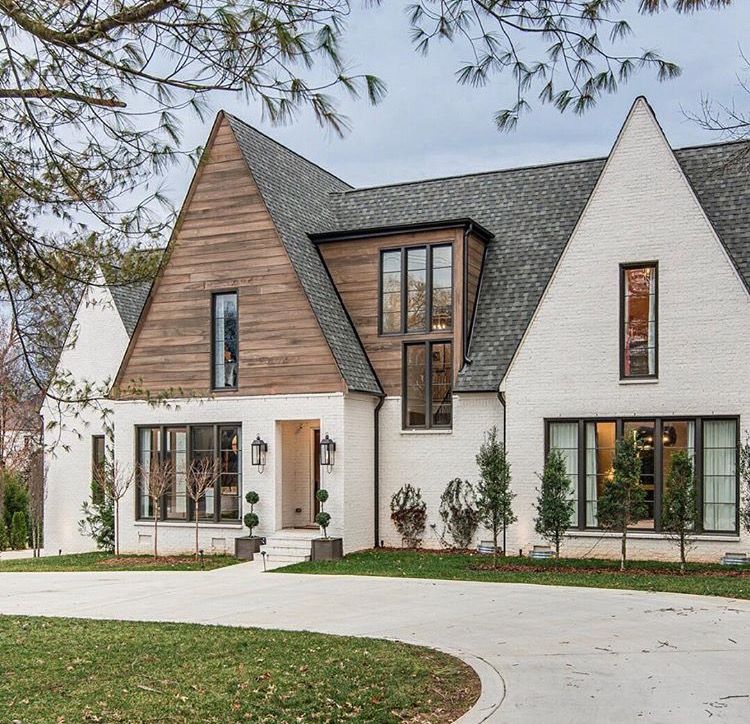
You can also find them on older churches that have given many a roofer a run for their money.
Here is a very scientific drawing that gives a general idea about the different roof pitches:
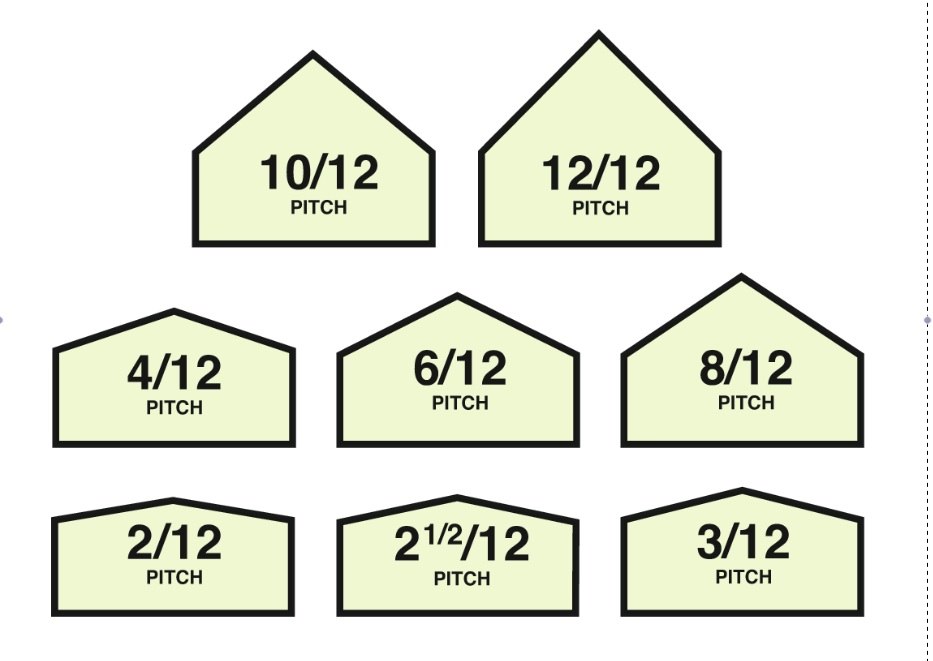
Now that we’ve become comfortable again with basic trigonometry, here’s why you should care.
Why Do I Care?
You don’t.
But you should care, because the pitch of your roof determines two important things:
- Can water efficiently roll off of your roof?
- Can strong winds get underneath your shingles?
If your roof slope isn’t allowing water, materials, and wind to roll off of it, then you have a problem.
Roofs don’t enjoy having things sit on them for long periods of time because that helps water remain stationary in those spots.
When water remains stationary, it does devious things like create new leaks, find old leaks, and seek out pretty much any vulnerable area on your roof.
We’re going to assume that you’re also not interested in wind ripping apart your roof so there’s that too.
So, if you ponder it, roofers are also master mathematicians, renowned for our grasp of numerics.
Yes, I have made the case that your understanding of trigonometry determines if your home lives or dies.
Deal with it.
“But.. but.. but…”, you stammer, “I have a metal roof so what then?”.
First, understand that it’s okay to go more than 5 seconds without telling someone you have a metal roof.
Don’t be the vegan of your friend group.
Second, not a whole lot is different with metal roof angles.
Are Metal Roofs Sloped Differently Than Shingle Roofs?
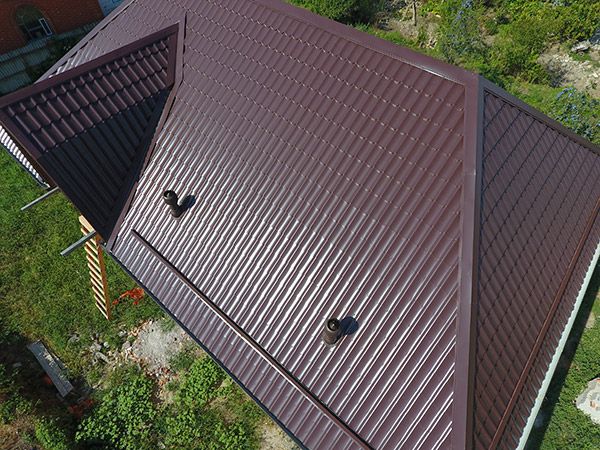
No, but yes. But no.
Here’s why: metal roofs are metal.
Thank you, we’ll patiently wait for your applause.
But in all seriousness, metal roofs don’t really suffer from the issues listed above. This is because pooled water has a much tougher time leaking through metal than a shingle.
Crazy, right?
And when it comes to wind, there aren’t any layers for the wind to peel up.
Summary: your roof pitch isn’t that big of a deal when you have a metal roof, because metal roofs are the big, bad dogs of the roofing world.
They don’t play by the same rules.
Speaking of things that don’t play by the rules, let’s welcome our next contestant:
The Single Pitch Roof
There isn’t a lot left to the imagination with this type of roof. It’s a roof with a single pitch in one direction.
Yes, that’s correct: in one direction. What a spicy concept.
For some context, here’s what we’re working with:
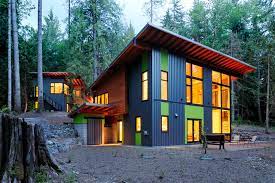
Where do you see these? Usually in modern homes or sheds. Not a whole lot of use cases besides those two.
Is this type of roof worse than the standard multi-pitch roofs you see?
No. It all comes down to the angle and materials, which you’ve picked up on by now.
Summary: wicked low angle with shingles?
Be concerned.
Any angle you please because you have a metal roof and spend most of your time laughing at the neighbors who don’t?
Be less concerned.
Do I Need A Roofer to Determine the Pitch of My Roof?
Well, that depends.
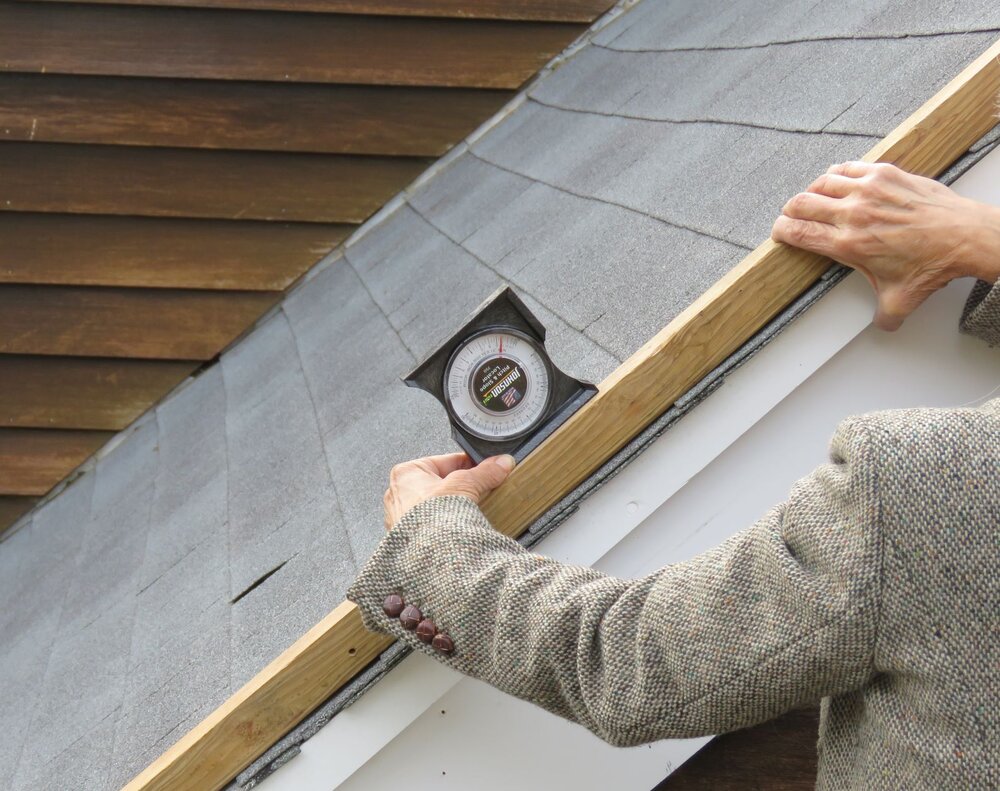
For most homeowners, yes, because we know exactly what we’re looking for, we have the tools, and we love standing on roofs.
The first two reasons are most important but we had to express our love for the process.
But some homeowners are dead set on being the king/queen/champion/protector of their home.
If that’s the case, grab yourself a friend (for physical and emotional support), grab yourself an object that finds angles, and grab your ladder.
Now let’s get to work.
Step 1: Deploy ladder, step on it, measure angle of roof.
Step 2: Put ladder away.
Step 3: Accept award as master roof-pitch measurer.
That’s pretty much it. We’ve given you the appropriate angle to look for on your roof, so if you’re feeling like a Mr./Ms. Do-It-All, be our guest.
If you need a comprehensive roof inspection done, we’d be glad to do that for you as well.
Closing Thoughts
Your biggest takeaway should be that roofing is a lot like 7th-grade trigonometry.
But in all seriousness, we know this isn’t the most exciting topic, but we do consider it to be a tool in the homeowner’s fraud-fighting arsenal.
This knowledge is a major advantage for you for two reasons.
1) Most shady roofers assume you don’t know about pitch. This means you can expose their bad work like an episode of 60 minutes.
2) You become the most roof-savvy homeowner in your neighborhood and are loved and revered by all, just like this guy. Big win for you.
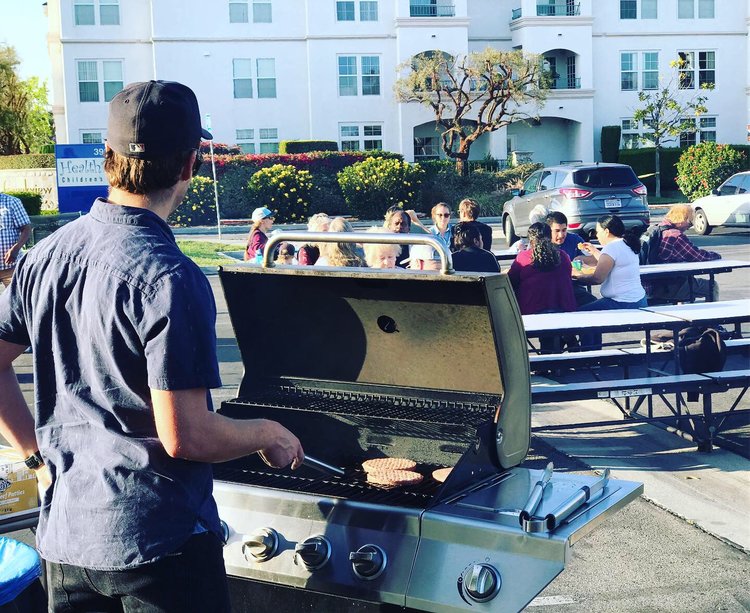
Feel free reach out with any questions.
Thanks!
